8 Analytics Tools for Product Managers
We’re basically drowning in data: 329 million terabytes daily, if you want the scary number. As product managers, this is a dream and a nightmare wrapped up in one.
There are countless tools out there that could transform this deluge into actionable insights, but let’s be real – not all of them understand the PM life. This guide offers carefully selected recommendations tailored to product managers’ needs:
- Clarity on how analytics tools can actually save your skin
- A cherry-picked list by Fibery PMs who understand what really matters
- Insights focused squarely on what’s valuable for YOU (and not just pretty charts that make the budget happy)
How to Find the Right Analytics Tool as a Product Manager?
When it’s time to pick an analytics tool, ignore the advertizing hype. Your focus should be on finding something that fits with how you already work – fast and no-nonsense.
Here’s how you avoid picking up a lemon:
- Assess Your Needs: Hold off on adding tabs in your browser for now. Get crystal clear on why you need an analytics tool in the first place: tracking user behavior, checking product health, or digging into market data.
- Ease of Integration: It must mesh well with what you’ve already got tech-wise. If not, brace yourself for migraines instead of insights.
- PM Friendly: Sure, a great analytics tool can count the number of stop signs in your city – but can it deal with PM-specific variables such as conversion rates? Strive for relevance over novelty.
- User Interface (UI): A UI like a maze is a hard pass. Aim for something straightforward. After all, you want to spend time interpreting data, not deciphering interfaces.
- Scalability: Don’t bet short-term here; pick tools that won’t fizzle out when your team inevitably scales.
- Support and Community: When things go wrong, good support should be readily available. If seasoned users are already sharing tips online, that’s a great sign.
- Cost-effectiveness: Price tags lie sometimes. An expensive tag might be attractive but remember: value trumps vanity pricing any day of the week. Especially when deadlines loom close.
The 8 Best Analytics Tools for Product Managers
There is a lot to analyze in the business world, and everyone has their go-to tools to make sense of it all.
For us product managers, analytics are like our trusty compass as they ultimately guide our decisions on engagement and user behavior.
Here’s a lineup of eight analytics heavyweights we handpicked just for you. They’ve each got plenty of bells and whistles, but they also bring something worthwhile to the PM table:
- Key Features
- Suitability for Product Management
- Integration Capabilities
- Pricing Model
Below, you’ll find these tools that come with high praise from fellow product management pros.
| Analytics Tool | Standout Feature | Integrations | Pricing Models |
| Amplitude | Advanced user segmentation and real-time analytics. | Seamless with Amazon S3, Salesforce. | Free tier available; starts at $49/month for advanced features. |
| Mixpanel | Detailed event tracking and robust A/B testing tools | Integrates well with ABTasty, Sprig. | Free basic; $28/month for full features. |
| Tableau | AI-powered insights with Tableau Pulse. | Compatible with SAP HANA, Snowflake, AWS. | Free basic; $28/month for full features. |
| Looker | Deep analytics with universal semantic modeling. | Strong fit for Google Cloud and Workspace. | Contact Sales |
| Pendo | In-depth user interaction insights and onboarding tools. | Good with Breadcrumbs, Figma. | Based on MAU; free plan covers up to 500 users. |
| Hotjar | Heatmaps and user feedback for real user behavior. | API support for small teams. | Free to $80/month, based on needs. |
| Segment | Single view of customer interactions across platforms. | Over 450 integrations, including major SDKs. | Free for basic; $120/month for more features. |
| Heap | Automatic capture of all user interactions. | Integrates well in advanced plans. | Free for basic analytics; more for advanced plans. |
1. Amplitude Analytics
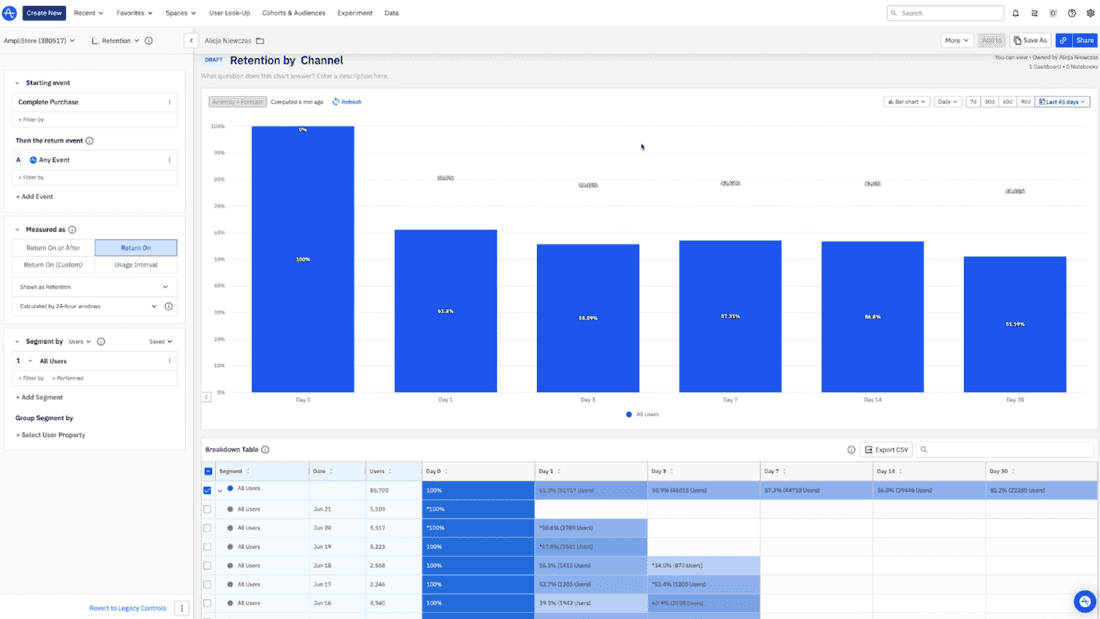
Amplitude stands out when it comes to dissecting user interactions and feeding you insights that matter, like retaining users and measuring engagement.
- Key Features: Sharp in carving up user groups, tracking their moves live, and figuring out the routes they take within your app.
- Suitability for PM: Spot on for PMs who eat, sleep, and breathe data-driven tweaks to elevate product experiences. Delivers those ‘aha’ moments straight through slick dashboards.
- Integration Capabilities: Integrates seamlessly with a host of other services from popular platforms like Amazon S3 to Salesforce.
- Pricing Model: Starts at everyone’s favorite price – free. There are more robust analytics available if you’re willing to pay for it, starting at $49/month for unlimited data analysis.
In short, Amplitude is cut out for PMs who want a clear line of sight from user action to strategic decision-making.
2. Mixpanel Analysis
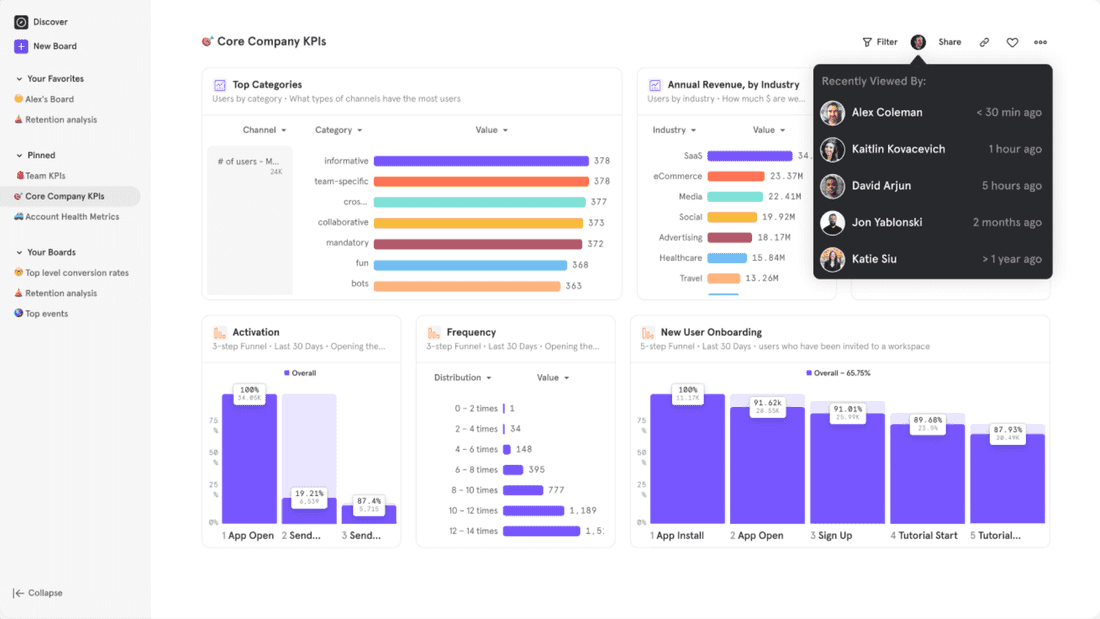
Mixpanel excels when it comes to capturing the nuances of user events and segmenting your audience to see who does what. This is ideal for tweaking those product features and making sure users don’t hit any bumps in their experience.
- Key Features: Nails down event tracking right to the smallest detail, gives you a look at user groups over time (cohort analysis), plus its A/B testing tools are some of the best we have ever seen.
- Suitability for PM: Just right if you’re keen on watching how changes play out immediately and want insights that help pivot without missing a beat.
- Integration Capabilities: Integrates with PM favorites like ABTasty and Sprig, so hooking into various data sources isn’t an issue as it’s built for flexibility.
- Pricing Model: You can dip your toes in with the free plan, should you crave more power, prepare to part ways with $28 monthly.
The bottom line is that Mixpanel has got your back if live updates and adapting swiftly is important to you.
3. Tableau (Salesforce)
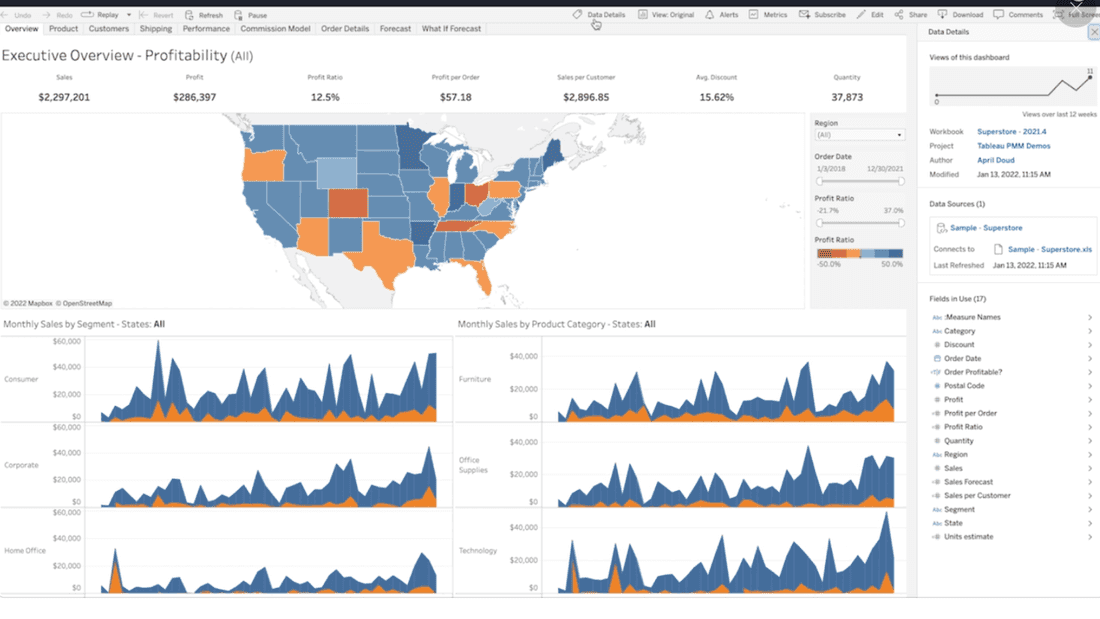
Tableau digs deep into the data mines and comes out with gold, giving you visuals that make even complex data look like a walk in the park.
- Key Features: It’s got AI smarts, and you can think of Tableau Pulse as your personal analytics wizard, making sense of all those numbers.
- Suitability for PM: If you’ve ever tried to explain a bunch of complicated charts at a meeting only to see eyes glaze over, this is your lifesaver. Keeps everyone on the same page without needing an interpreter.
- Integration Capabilities: Plays nicely with all the big players like SAP HANA, Snowflake, AWS. So no headaches when needing to merge data from different platforms.
- Pricing Model: Not one-size-fits-all. It starts at $15 monthly if you just want to peek at reports or goes up to $75 if you’re diving headfirst into report creation and deep analytics.
For product managers who swear by “seeing is believing,” Tableau turns raw numbers into compelling stories perfect for persuading teams or stakeholders without putting them to sleep.
4. Looker (Google)
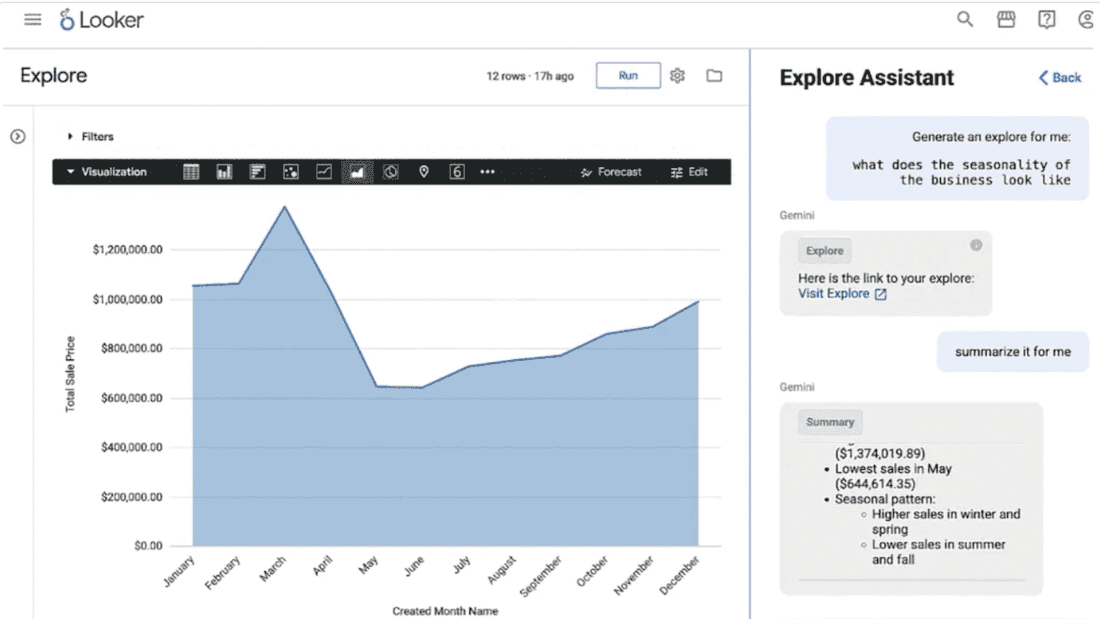
Looker smartly marries business intelligence with hardcore data-diving capabilities. Think sleek dashboards and custom reports on steroids, thanks to the integrated Google Gemini AI.
- Key Features: The universal semantic modeling layer and AI-driven insights mean you can dig deep into your data without needing a shovel.
- Suitability for PM: If your workspace looks like a shrine to Google products, then Looker will fit right in. It integrates perfectly with existing Google products, but there might be a struggle if you’re running on other platforms.
- Integration Capabilities: It just molds perfectly with Google Cloud and Workspace – making your life easier if you’re all in on Google already.
- Pricing Model: They’ve bundled up pricing with other Google Cloud offerings, which means reaching out to their sales team is how you’ll get the lowdown on costs.
So, if being under Big G’s umbrella feels right for you as a product manager and seamless scaling coupled with heavy-duty analytics sounds appealing, Looker might be worth looking into (pun slightly intended).
5. Pendo Analytics
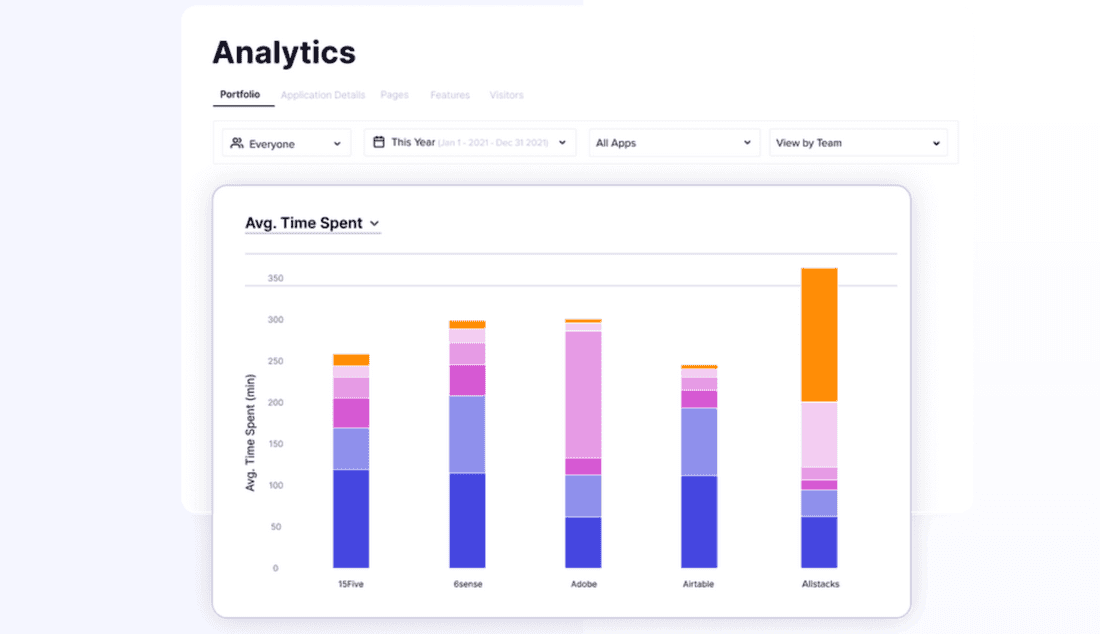
Pendo excels at gaining insight into how users actually use your app and helping them understand and navigate it faster. It’s ideal for PMs who want to ensure users are not just clicking but also smiling.
- Key Features: Serves up the fine details on user interactions, topped off with solid features that boost user retention.
- Suitability for PM: Prime real estate for PMs focused on making apps as pleasant as possible to use.
- Integration Capabilities: Integrates quite well with other design-friendly tools like Breadcrumbs and Figma, supporting a design-centric workflow.
- Pricing Model: Costs scale based on active users per month so you’ll need to chat up their sales team. If you’re managing a startup with fewer than 500 monthly users, the free plan is quite feature-packed.
For design product managers eager to dial into what makes users tick inside their digital playgrounds Pando’s where it’s at.
6. Hotjar
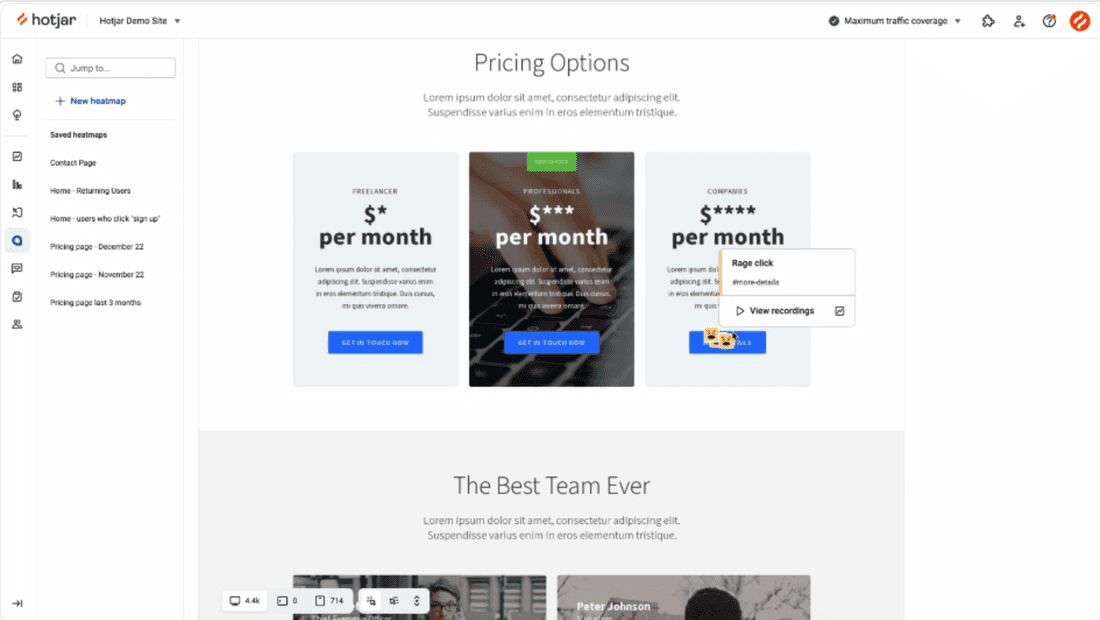
Hotjar steps up the game by showing you what your users are literally doing with heatmaps and session replays. It’s an ideal tool for understanding where people actually click versus where we hope they would.
- Key Features: It pulls in user feedback in the form of ‘click heatmaps’ and surveys. You’ll know exactly which features grab attention or make users bail.
- Suitability for PM: If you’re all about refining your website experience and crave seeing actual human behavior on your site, this is spot-on for PMs.
- Integration Capabilities: Good news for smaller squads: there’s an API that plays nice with whatever setup you’ve already got running.
- Pricing Model: Starts at the lovely price of “free,” but if things start getting serious, expect $32/month. Businesses need to pay around $80/month if they want even more insight into engagement.
In short, Hotjar gives product managers a front-row seat to user action, minus any sugarcoating.
7. Segment (Twilio)
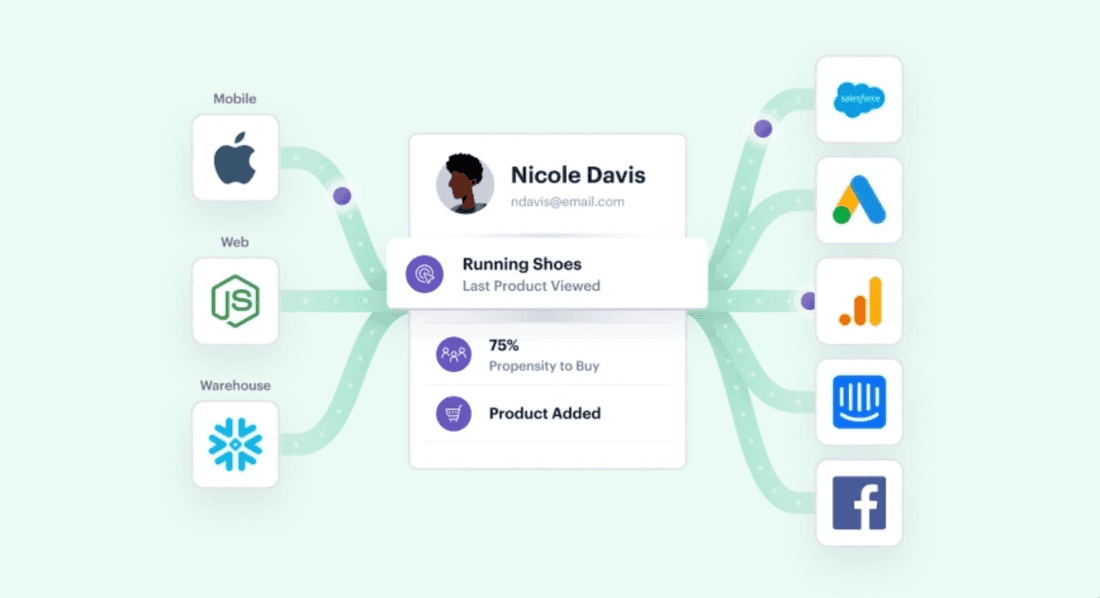
Segment is your go-to data consolidator, designed to herd all that customer information from far and wide into one manageable space.
- Key Features: It gives you a single view of the action across multiple touchpoints, which means you can make smarter choices without juggling different datasets.
- Suitability for PM: Perfect if you’re tired of chasing after segments of user journeys on separate platforms and want everything under one roof.
- Integration Capabilities: With its vast integration network (450+), it connects with nearly every SDK out there, whether your customers are on Windows, Apple, or Android devices.
- Pricing Model: You can dip your toes in with their free plan good for up to 1,000 monthly visitors plus a bonus data warehouse. The Team plan at $120/month covers you for up to 10,000 visitors along with API access.
For product managers buried in customer research info spread across too many places, Segment might just be your solution.
8. Heap (ContentSquare)
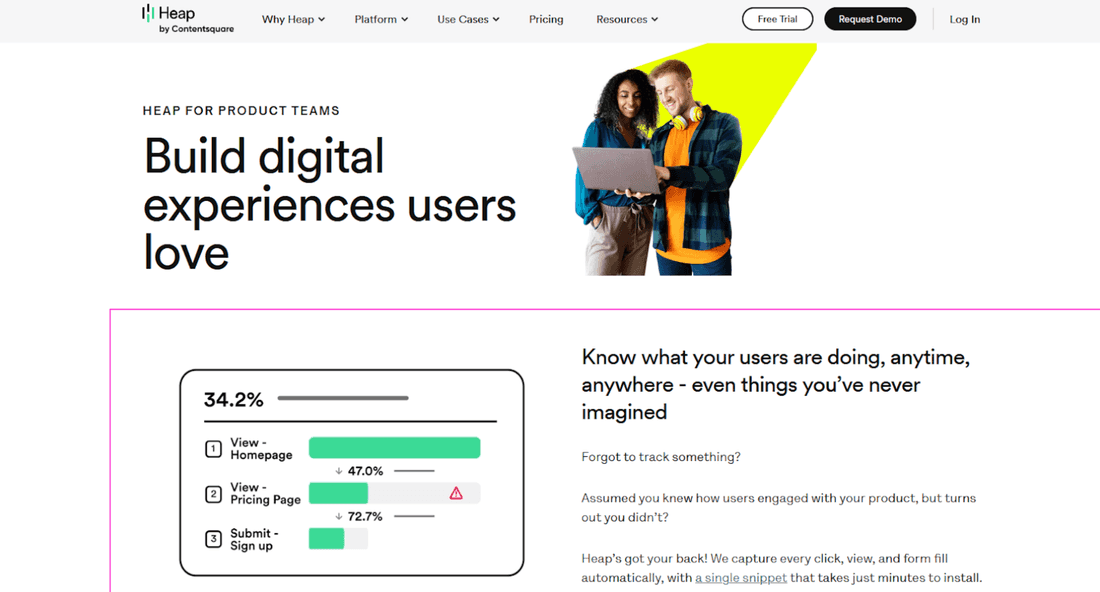
Heap practically takes the grunt work out of data analytics by snagging every user move automatically. With this tool, you can say goodbye to the tedious task of manual event tracking. This means you get a full picture for analysis without breaking a sweat.
- Key Features: Comes packed with interactive road-mapping, real-time insights, dashboards, charts, and playbooks, all thanks to its autopilot on data capturing.
- Suitability for PM: A godsend for large teams that rely heavily on advanced analytics to craft strategies from exhaustive user interaction intel for roadmapping.
- Integration Capabilities: Offers a good range of integration options, particularly with the Growth or Pro plans, enhancing its adaptability within diverse tech ecosystems.
- Pricing Model: Throws in a plan covering basic analytics. Spend some cash on Growth or Pro plans when you crave advanced features and tailored suits.
For product managers aiming at decoding intricate user behaviors minus the hassle of old-school event tracking antics, Heap is a great tool.
The PM’s Hot Take
Think of data analysis tools as the unsung heroes on your team. They’re critical players, right? So pick one like you would a new colleague: trust your gut, lean on what you’ve learned before, and seriously consider how it’ll mesh with the way your team already works.
Conclusion
Selecting the appropriate analytics tool isn’t a trivial matter. It’s about matching the complexities of your specific data, ensuring compatibility with systems you’ve already got in play, and assuring seamless integration into your workflows – all while keeping an eye on budget.
We’ve curated a selection of tools we feel are up to scratch and could serve you well. In the end, though, it’s over to you because no one understands the ins and outs of your team and products better than you.
For additional wisdom on handling data intricacies, developing product roadmaps, or any other topic under the product management sun, don’t hesitate to check out Fibery’s blog.
And if you want to give Fibery a go, start your 14-day free trial now.
FAQ
How do product managers use analytics?
Well, imagine a product manager as someone with a mission to make the user’s experience nothing short of brilliant.
They dive into analytics to get the lowdown on what users are up to, check if their latest features hit the mark, and decide where they’re headed next.
Data talks. From who’s clicking what, when they peace out or stick around longer – all so that guesswork takes a backseat.
What tools do product managers use?
Product managers have a range of digital gadgets and platforms at their disposal, such as:
- Analytics tools serve as the PM’s crystal ball for understanding what users are doing and how the product is performing.
- Data visualization tools because sometimes a picture really is worth a thousand spreadsheets.
- User feedback tools: think of it as having coffee with your users but scaling it to thousands at once.
- Project management tools so everyone’s on the same page without playing email ping pong (yep, you guessed it, like Fibery!).
What is a product analytics tool?
Imagine something like an all-knowing oracle; that’s your product analytics tool. It silently stalks user interactions with your app or website to gather heaps of data.
It then turns those numbers into actionable insights about user behavior and engagement levels, all so we PMs can make smarter calls backed by stats instead of gut feelings.
Psst... Wanna try Fibery? 👀
Infinitely flexible product discovery & development platform.